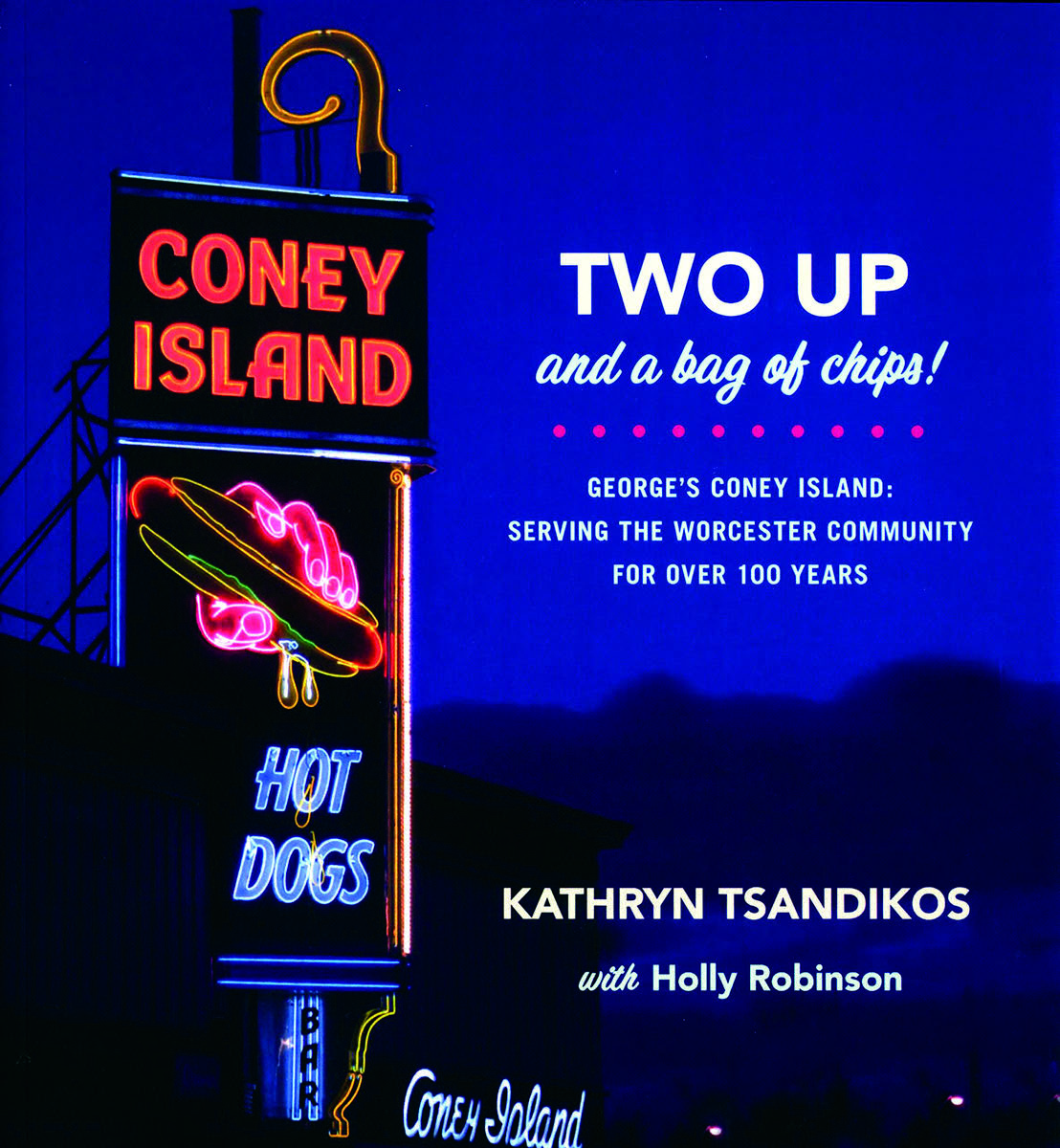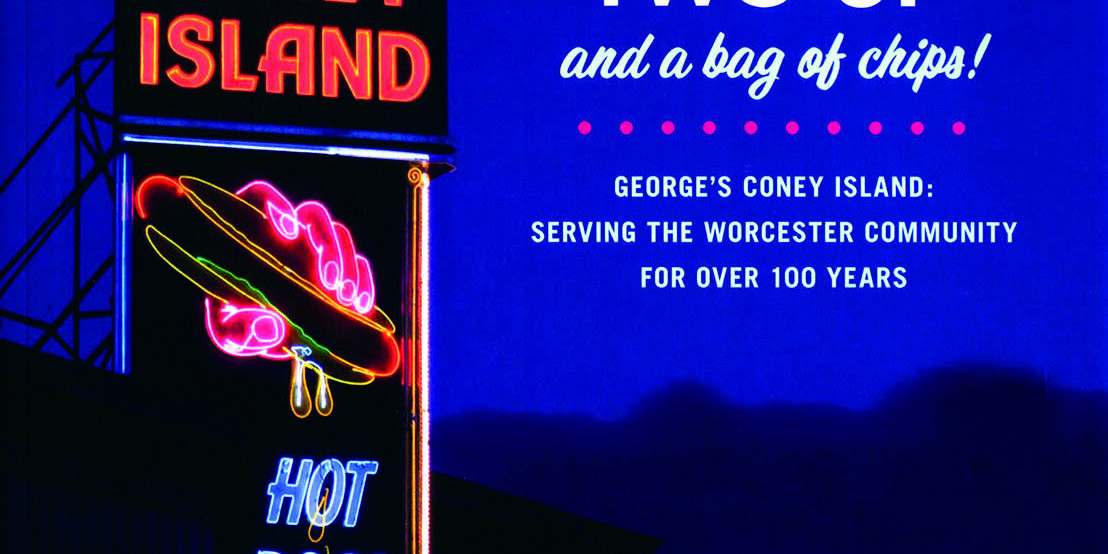Two Up and a Bag of Chips! George’s Coney Island: Serving the Worcester Community for Over 100 Years
By Kathryn Tsandikos with Holly Robinson
Cambridge, Mass.: TidePool Press, 2021
Softcover, 144 pages, $30
Reviewed by Harold Aurand Jr.
 I’ve never been to Worcester, Massachusetts, and so, of course, I’ve never eaten at George’s Coney Island either. As soon as I saw this book, though, I knew I needed to have it in my collection. I have other books on restaurants, but usually, they’re about certain types, like diners, steakhouses, or chains. Books on just one restaurant are rarer, or maybe they’re published and marketed locally and harder to find.
I’ve never been to Worcester, Massachusetts, and so, of course, I’ve never eaten at George’s Coney Island either. As soon as I saw this book, though, I knew I needed to have it in my collection. I have other books on restaurants, but usually, they’re about certain types, like diners, steakhouses, or chains. Books on just one restaurant are rarer, or maybe they’re published and marketed locally and harder to find.
Author Kathryn Tsandikos is the third generation of her family to have run George’s Coney Island, and while her book isn’t perfect, it does do many things pretty well. First, there is a history of the restaurant itself, starting with Kathryn’s grandfather, George Tsagarelis.
George came to the U.S. as a teenage immigrant from Greece, hoping to make a better life for himself. After several lackluster jobs, he took over ownership of the Alpha Lunch Company and its secret sauce for hot dogs. Eating sausages on rolls started when German immigrants brought the idea to America. However, the Greeks and Macedonians figured out that a toasted bun, mustard, diced onions, and a bean-less chili sauce brought them to perfection. Those are the true Coney Dogs.
The restaurant moved once, just down the street, and then developed into its current form. George’s is known for its wooden booths, where customers are encouraged to carve their names or messages, its tiled floor, and iconic neon sign. Stanislov Romanoff designed the original advertisement, and two later ones, and created George’s logo of a hand holding a hot dog, with mustard dripping off the edge. The current version of the sign is 50 feet tall and a local landmark. The sign was also used as the basis for a mural on the back of the building. The food, especially the hot dogs, have stayed true to their original design too.
What I found more interesting was a description of how George’s fits into the Worcester community. Few places have seen more changes. Originally a 19th-century mill town, where immigrants came to work in factories, it was very much a walking city. There was a trolley system, and George’s was right across from the train station, so foot traffic was the key to business.
Later, Interstate 290 came through and bisected the community. De-industrialization eliminated many jobs. Today, Worcester enjoys a renaissance with a vibrant arts community, educational facilities, and a growing medical and high-tech sector. At each step, new groups of people arrived on the scene. George’s Coney Island has changed with the times. While once it was a late-night gathering spot, it now does more business at lunch with a family trade. Still, remaining relevant for a century is no easy task.
The book’s other sections focus on George’s employees and the art that grew out of the Coney Island. Several painters and professional photographers have used the restaurant as a subject. Tattoo artists and Instagram artists get their spot as well. The book is very well illustrated. The reader really gets a sense of what it would be like to eat there.
Finally comes the heart and soul of the book in a series of brief statements by George’s customers on what the Coney Island has meant to them. Many remember first coming for hotdogs with parents and grandparents, then hanging out with friends or dates in high school, and now bringing their own families. Many of these are very touching and give a good sense of how a restaurant could be a vital part of a community. Part of me thinks there could have been a few fewer of these, as they sometimes overwhelm the other text, but it wouldn’t be the same book without these recollections.
Overall, this is a good book and, hopefully, it will inspire other writers to tell the histories of locally known, iconic restaurants. Every town should have at least one, linking generations of residents into a common story.
Harold Aurand Jr. is a professor of history at Penn State- Schuylkill Campus.
This book review originally appeared in the SCA Journal, Fall 2021, Vol. 39, No. 2. The SCA Journal is a semi-annual publication and a member benefit of the Society for Commercial Archeology.
More Book Reviews


